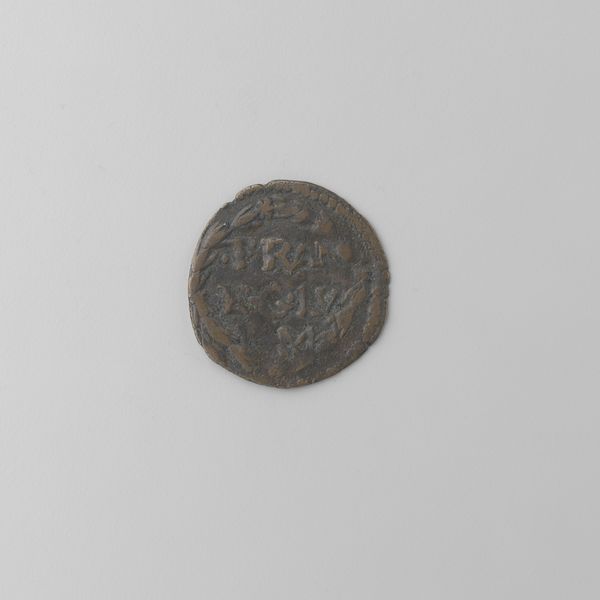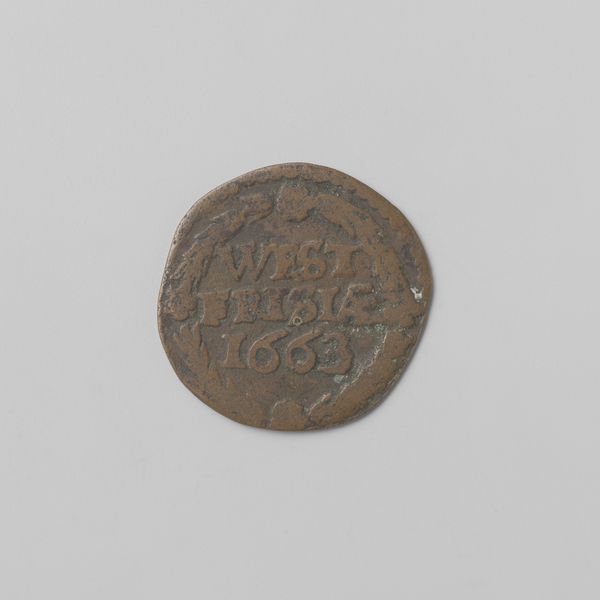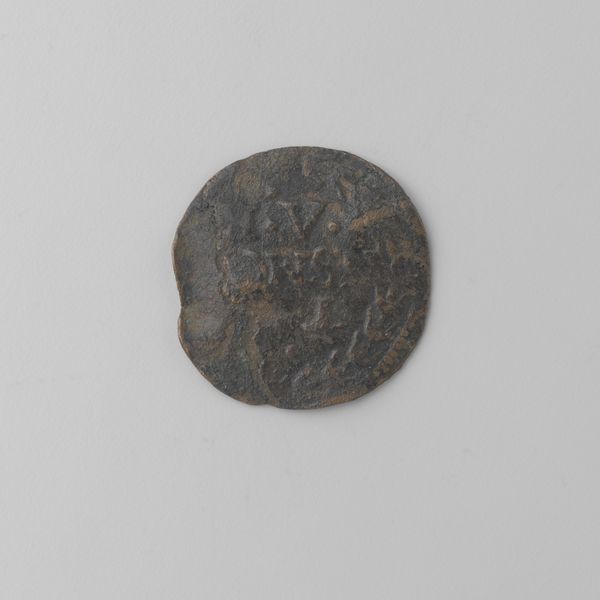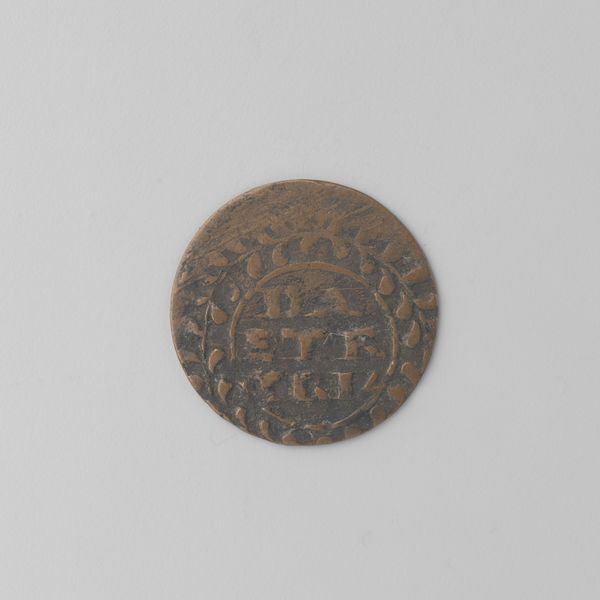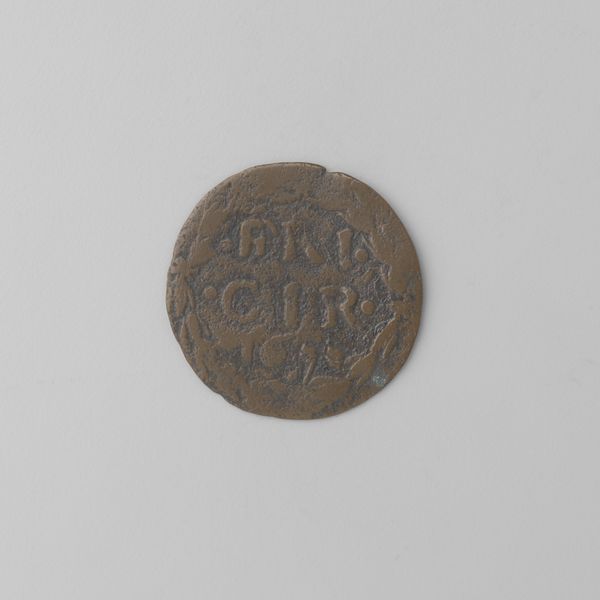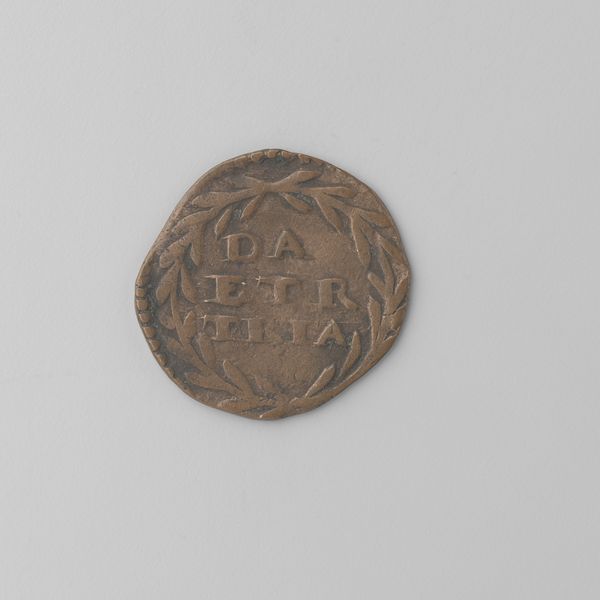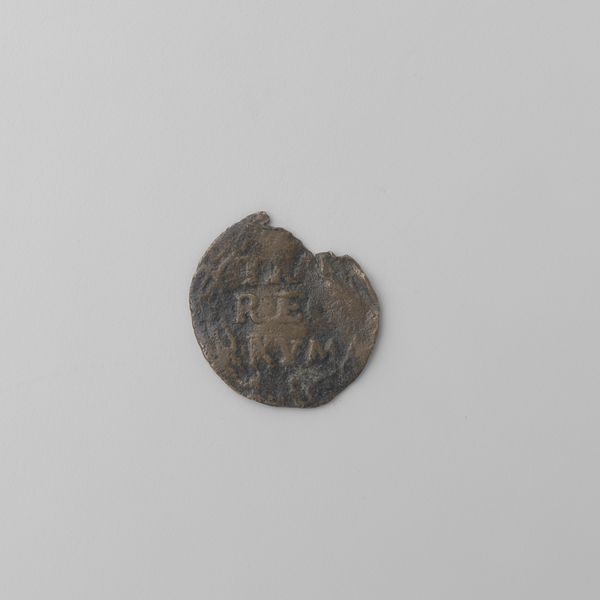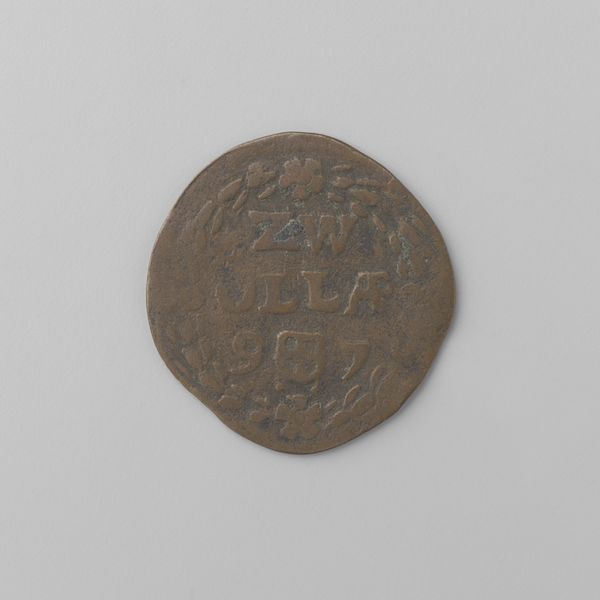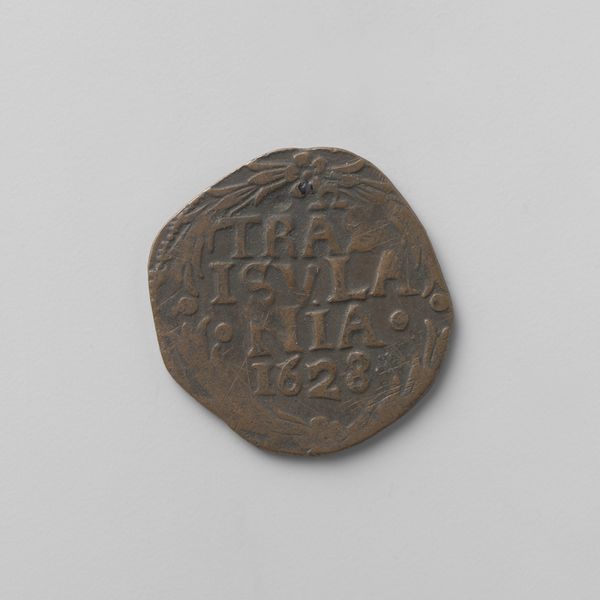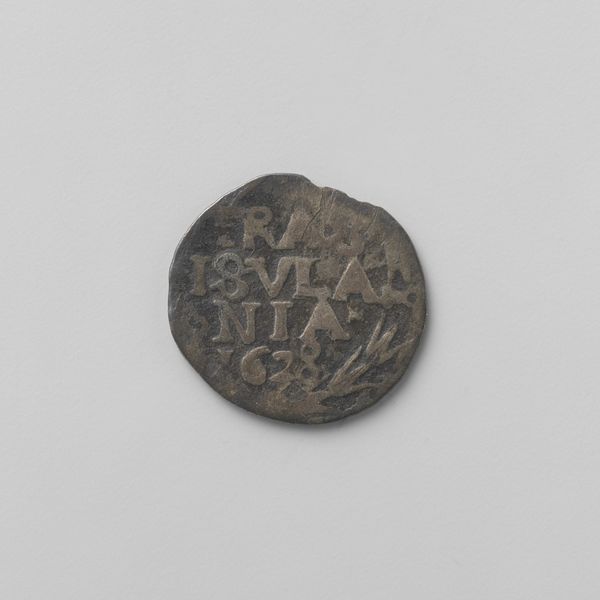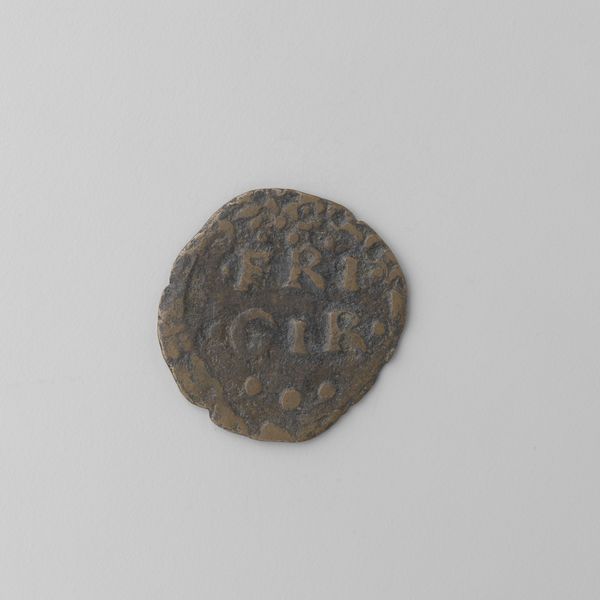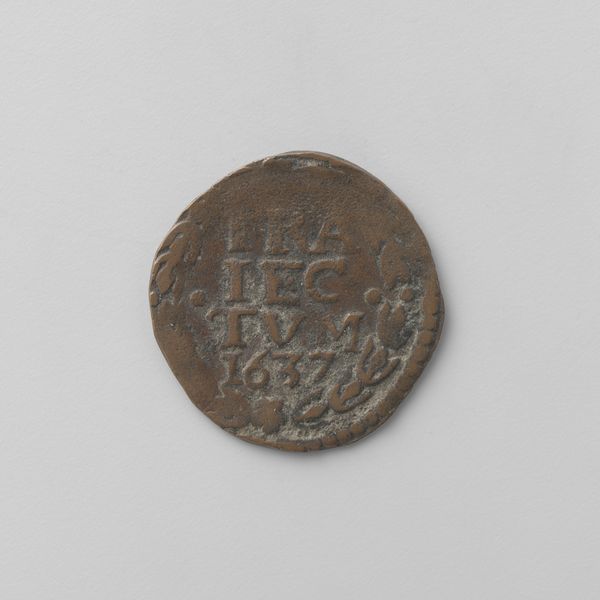
metal, embossing
#
dutch-golden-age
#
metal
#
embossing
#
ancient-mediterranean
#
embossed
#
coin
Dimensions: diameter 1.9 cm, weight 1.77 gr
Copyright: Rijks Museum: Open Domain
This is a Westfriese duit, made in 1663 by the regional authority of West Friesland. It’s a humble object, this small copper coin, yet loaded with meaning. The material itself, copper, speaks to trade networks and extraction industries of the 17th century. Consider the labor involved in mining, smelting, and refining the metal, then in the die-striking process that gave the coin its form and inscription. This “duit” was a token representing value, but also a testament to the intricate systems of labor and commerce that underpinned Dutch society at the time. The coin’s worn texture and faded inscription tells of countless transactions, of everyday exchanges that fueled the Dutch Golden Age. Looking closely, we can see how the physical properties of the copper – its malleability and relative durability – have shaped the object's destiny. The coin is more than just a marker of economic activity, it encapsulates a whole world of making, consumption, and social relations.
Comments
No comments
Be the first to comment and join the conversation on the ultimate creative platform.
